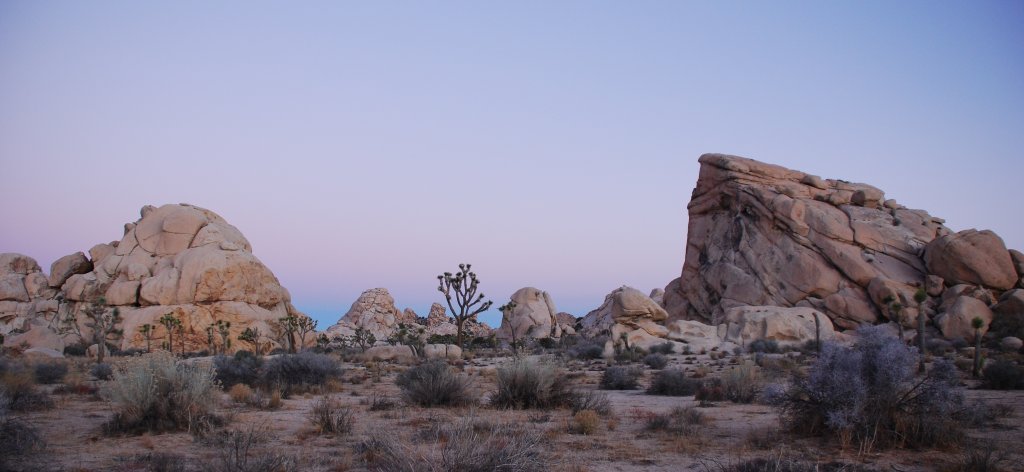Desert trees are evolved to survive in arid regions. They conquer scarce water resources and frequently unforgiving soil conditions.
In this regard, various desert tree varieties that survive and thrive in harsh temperatures have come across.
They have evolved physiological adaptations like water storage tissues, deep root systems, and drought-tolerant metabolism.
On the other hand, structural adaptations consist of thick bark, modified stems, spines, thorns, etc.
Is Joshua High Desert or Low Desert Tree?
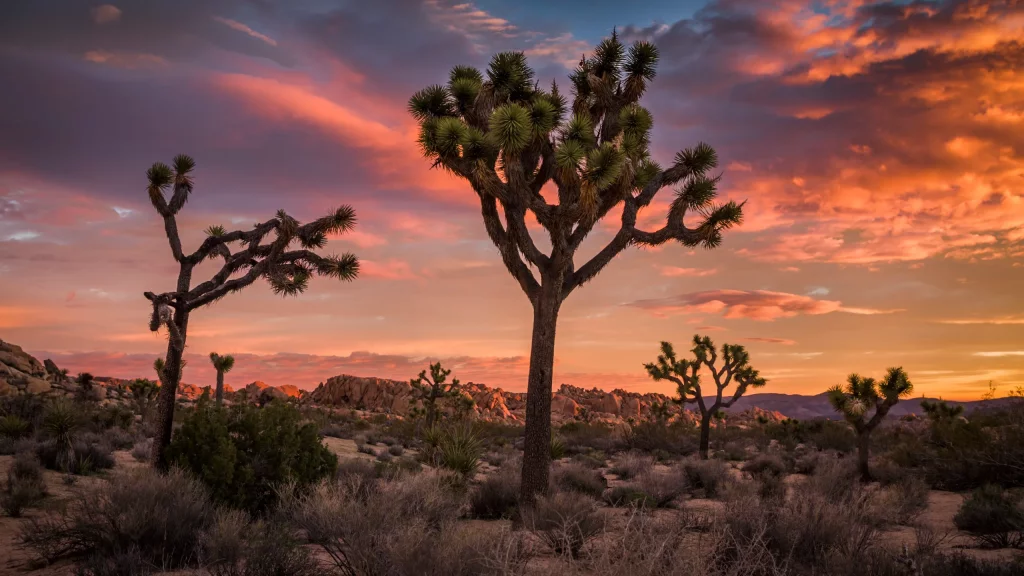
Joshua trees are mostly found in the Mojave desert, which is a type of high desert.
Some characteristics of Joshua trees are as follows-
- The Joshua tree has a distinctive appearance. They have long stemmed branches and finger-like leaves
- The leaves of the Joshua tree are quite long and needle-like, measuring from 7 to 12 inches.
- Joshua trees do produce white flowers that have a wax-like texture. They also attract pollinators in spring.
- Once the flowers are pollinated, they grow into green to brown fruit containing flat seeds.
- They have a great lifespan.
- Culturally, they also have significance in the American culture, especially in Southwest America.
The Mojave desert’s terrain ranges from 2,000 to 5814 feet above sea level. The Joshua tree is native to the Mojave desert, which has milder temperatures than the low desert. The Joshua tree has adapted accordingly. Joshua trees are well suited to colder temperatures and moderate summers.
Their hard, spiky leaves help them retain moisture and store water in colder temperatures. Joshua trees also have specialized tissues that help them survive drought-like situations.
1. High Desert
Located at higher elevations, they generally range from 2,000 to 4,000 feet above sea level. The climate ranges from moderate to high temperature. They are mostly found in mountainous regions. One can occasionally find snowfall as winters are cold in high deserts. While summers can be moderately warm, rainfall varies from moderate to high. These trees have evolved to withstand colder temperatures and more erratic weather. They have adaptations for cold tolerance and effective water utilization. The Great Basin Desert is a classic example of a high desert. Some of the common trees found here are hardy shrubs, juniper, etc.
2. Low Desert
As the name suggests, they are located at lower elevations below 2,000 feet above sea level. They generally have a flat or sloping terrain. Here, summers are scorching hot, whereas winters are mild with no snowfall. One can surely expect to experience heat waves in summer, though! The lack of to mild rainfall creates problems like water scarcity. As a result, trees found here have adaptations where they can conserve water, like barrel cacti, agaves, etc. Moreover, they also have extensive root systems and mechanisms to reduce water loss through transpiration. Sonoran desert is a great example of a low desert.
High Desert vs. Low Desert
Some of the key differences which you may find between high-desert trees and low-desert trees are:
1. Water storage
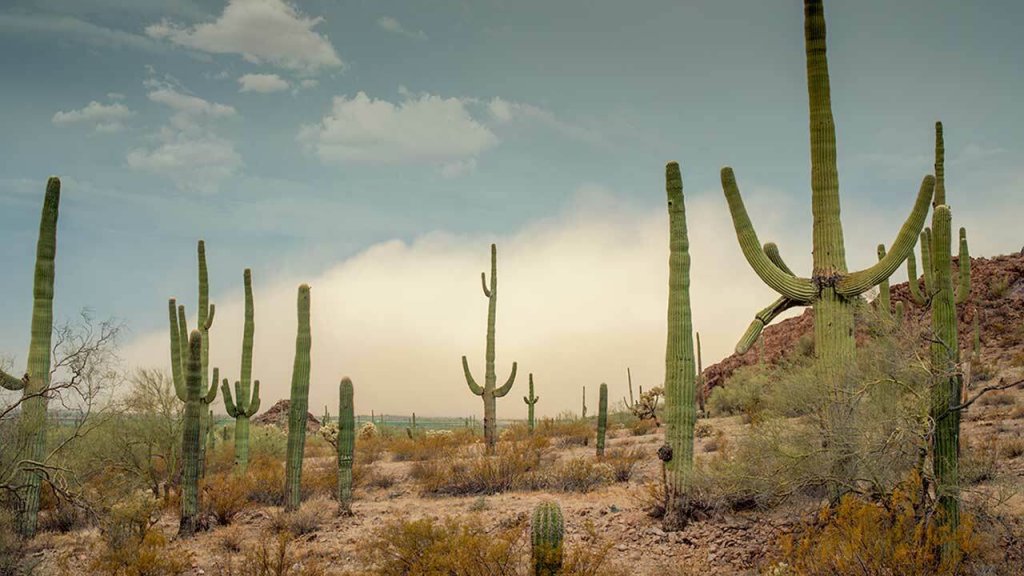
High desert trees may have water storage adaptations but only in milder conditions. Low desert trees, on the other hand, have higher chances than high desert trees to have water storage adaptations. Some desert trees in low deserts do not even have leaves, such as cacti.
2. Drought Tolerance
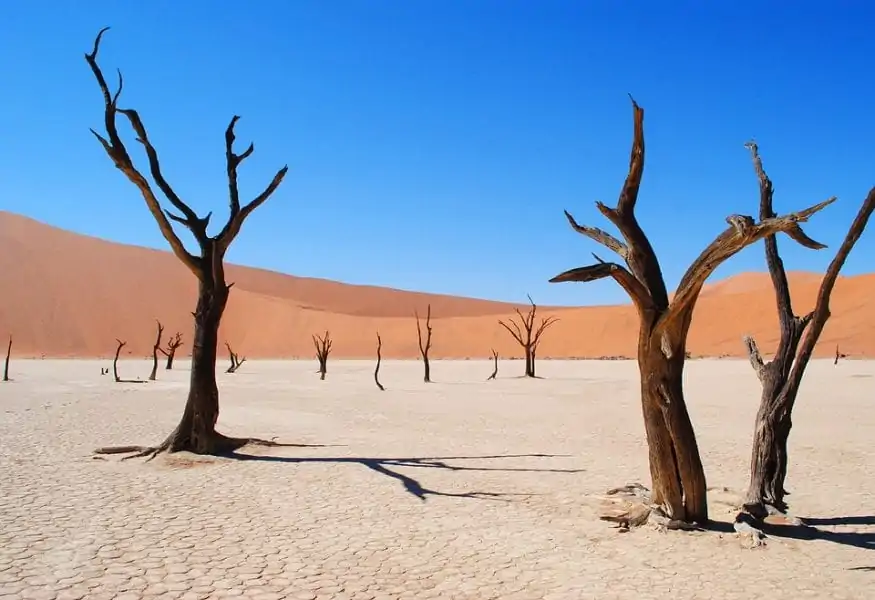
Here also, since low desert trees experience no to mild rainfall, desert trees present there have higher drought tolerance than high desert trees.
3. Root Systems
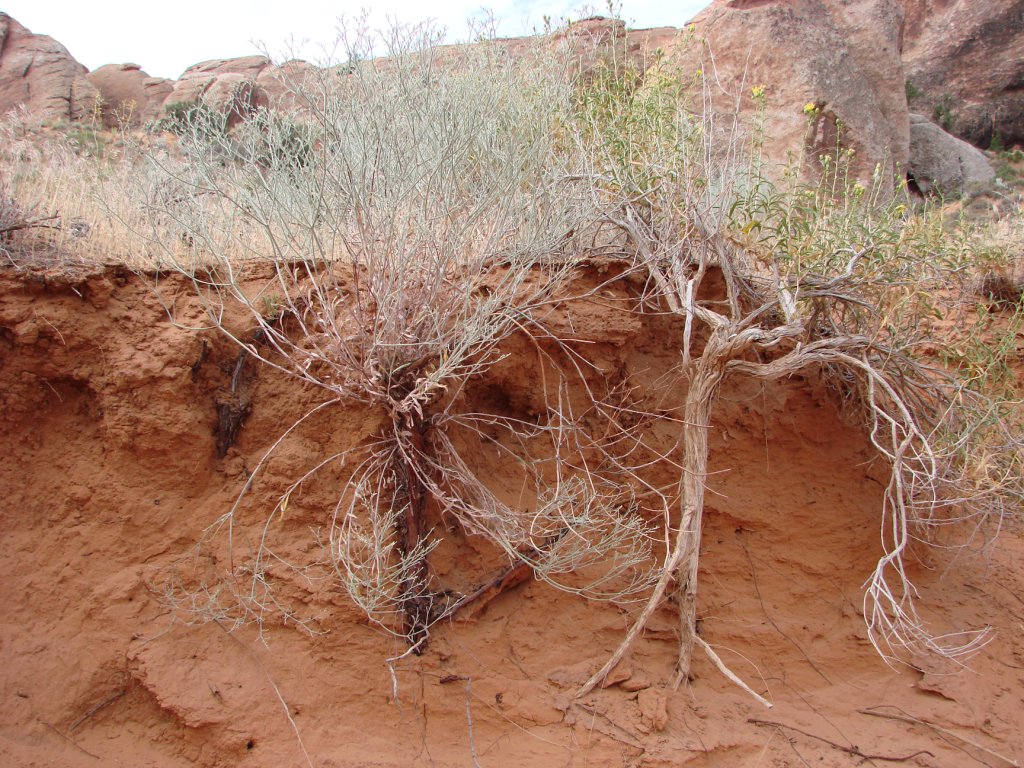
Both in high deserts and low deserts, the trees have extensive root systems. However, in the low desert, the roots are also shallow, which can quickly absorb moisture and rainfall. Now let us know the famous desert tree names which are present in both of them.
4. High Desert Tree Names
- Pinyon pine- These trees produce edible nuts and have short needles-like leaves.
- Juniper- these trees thrive in high desert regions with various species of them. They also have an aromatic scent.
- Quaking Aspen – these trees are quite famous for their trembling leaves
- White fir- quite famous for its adaptations in cooler temperatures
- Bristlecone Pine – One of the oldest living organisms on the planet
- Mountain mahogany- they have leathery leaves
5. Low Desert Tree Names
- The Saguaro cactus is known for growing to gigantic heights
- Desert ironwood – they thrive in arid conditions and have hardwood
- Palo Verde- they are known for their low desert adaptive conditions
- Mesquite- they have long, spiny stems
- Ocotillo- they produce vibrant red flowers during rains
- Ironwood- they have deep roots to access groundwater
Conclusion
In conclusion, it can be said without any doubt that the Joshua tree is indeed a high desert tree! They are perfectly adapted to this region’s peculiar ecological problems—their adaptation to cold temperatures and resilience in high desert trees.
Now, these trees may also differ because of the desert type. People might wonder what the different desert types are. Generally, there are two types of deserts- high and low deserts.
Their specifications help them live in the harshest environment a high desert can offer.

